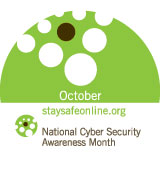Since it is peak season for cyber criminals, scammers and identity thieves here are some good tips to keep in mind when shopping online this holiday season.
• Check out the website /seller you are buying from. Call its phone number. If you can't find a working phone number, on the site, you may want to take your business elsewhere. Type the site's name into a search engine: If you find unfavorable reviews posted, you may be better off doing business elsewhere.
• Don't trust unsolicited e-mail or pop-ups. Legitimate companies don't send unsolicited e-mail messages asking for your password, login name or financial information. Scammers do. In fact, crooks often send e-mails that look just like they're from legitimate companies but direct you to click on a link, where they ask for your personal information. Delete these e-mails. Never call the 800 number often included in e-mail. Always confirm through documents or looking up in your browser that the number is legitimate.
• Look for signs a site is safe, such as a closed padlock on the browser's status bar. When you're asked for payment information, the beginning of the site's URL address should change from "http" to "shttp" or "https," indicating that the purchase is encrypted or secure.
• Pay with credit cards (not debit cards) because credit card companies will help you get a refund is necessary if the product isn't delivered, is defective or isn't what you expected.
• Don't click on a link in an e-mail notifying you of a holiday card or gift card without first checking and confirming that the person it claims to come from, actually sent it to you! That's especially true if the link in the email doesn't match or contain the name of a greeting card company.
• Never click on links sent in unsolicited e-mails. Instead, type in a Web address you know or look up yourself.
• Make sure your virus protection is up to date, firewalls are working and scans are done looking for spyware frequently.
Sources: McAfee, U.S. Federal Trade Commission
Watch out for fraud
...And new this year, just in time for the holidays, is malicious software disguised as electronic greeting cards.
``It looks just like a holiday card, but it basically allows the hacker to take control of your computer,'' said Brian Tombley, product manager at McAfee.
Typically, Tombley said, victims receive a holiday greeting e-card - possibly from a familiar e-mail address or name such as ``Mom'' - that asks them to open an attachment or click on a link to view the card. When users take that step, they unknowingly allow hackers to install a Trojan horse program that lets an outsider watch the victims' keystrokes for e-mail, online banking or other passwords, send pop-up ads to the computers or even use the victims' computers to send other spam or phishing messages from the victims' addresses. More

 NEWSLETTER SIGN UP
NEWSLETTER SIGN UP SUBSCRIBE
SUBSCRIBE CONTACT
CONTACT

















Leave a comment